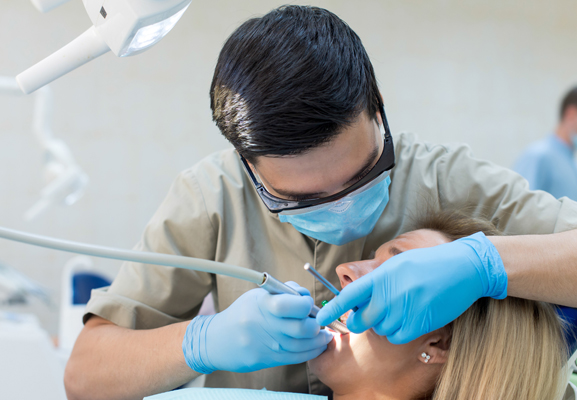What You Need to Know Before Getting Dental Veneers

Dental veneers are a cosmetic treatment used to improve the appearance of teeth with slight imperfections. If the teeth are discolored, chipped or slightly crooked, veneers will give the teeth a better shape and color.
So, when are dental veneers a good cosmetic treatment? You would need a dental exam and a dentist's feedback to know that. As for the rest of the questions you may have, keep reading and have them answered in our patient's guide to dental veneers.
What to expect when getting dental veneers
1. A dentist will recommend veneers only after a dental exam
Each dental patient has their own unique needs. Their overall health, their oral health and the alignment of their teeth will determine if dental veneers will correct their smile. That is why a dentist will do a dental exam before recommending veneers.
Depending on the results of the exam, the dentist will do one of three things. They may start the process of putting in veneers, or they may start the patient on other dental treatments as preparation for the veneers. The dentist may also recommend a different treatment altogether. Here are some common scenarios that dentists have to deal with when putting in veneers.
- Severely crowded, gapped or crooked teeth that have to be corrected with orthodontic treatment before veneers are fitted
- A narrow jaw that causes crowded teeth, which must be corrected with a jaw expander before veneers are fitted
- Cavities, gum disease, TMJ and any other existing conditions, which have to be resolved before veneers are put in
For certain conditions, the dentist will recommend alternatives to veneers. For example, teeth whose structures have been severely damaged by bruxism, injury or decay will have to be restored with crowns or even dental implants.
2. It is a two-step procedure
Veneers are not fitted in a single dental visit. During the first visit, the dentist will perform an exam, and if a patient is deemed suited for veneers, the dentist will start the process of fitting them. The dentist will start by making a mold of the patient's teeth.
The mold will be sent to a lab and used to make the veneers. Meanwhile, the dentist will help the patient design the perfect smile and choose the shape and color of the veneers. They will then prepare the surface of the patient's teeth for the placement of the veneers and conclude the visit by placing temporary veneers on the teeth. During the second visit, the dentist will place the permanent veneers.
3. The restored teeth will be shorter with thinner enamel
To accommodate dental veneers, the surfaces of the teeth must be prepared by removing some enamel. The teeth may also have to be made shorter and thinner to make space for the veneers. While placing dental veneers is not as invasive a process as dental crowns, it still involves altering the structure of the teeth. Not to fear, however, as an anesthetic is used to numb the teeth before they are altered, so getting veneers is a painless process.
4. How long veneers last
The durability of veneers depends on two things: how well they are cared for and the material they are made from. Most veneers are made from porcelain or dental resin. Porcelain is tougher and more durable than resin, but if a person has bad dental habits, the veneers will chip and stain no matter what they are made of. When taken care of, veneers will last decades.
Give your smile a boost
If you want to improve the appearance of your teeth, see a dentist and find out if veneers will do the trick. They are a popular cosmetic treatment that gives great results.
Request an appointment here: http://www.gatewaydental.org or call Gateway Dental Dr. William Swann DDS at (301) 485-7492 for an appointment in our Bowie office.
Check out what others are saying about our dental services on Yelp: Dental Veneers and Dental Laminates.
Recent Posts
A cosmetic dentist plays a crucial role in enhancing both the function and appearance of a patient's teeth. Some treatments are more effective for a smile's appearance than its function. Understanding the difference between corrective and aesthetic dentistry is essential for anyone considering dental improvements.Corrective dentistry addresses structural problems and functional issues within the oral…
Periodontic is a dental specialty that deals with diseases of the gums and the bones that sustain the teeth. This condition can affect your entire oral cavity and overall wellbeing. Periodontics care is necessary when something is wrong with the gums and other soft tissues.Gingivitis and periodontitis are the two prevalent types of periodontal diseases.…
Choosing the right kids' dentist is one of the most important decisions you will make for your child's oral and overall health. This dental professional specializes in providing dental care tailored to the unique needs of young patients, fostering a positive experience with dental care from a young age. Working with an experienced pediatric dentist…
A dental veneer is a popular cosmetic dentistry solution designed to enhance the appearance of teeth by improving their shape, color, and alignment. Proper care and maintenance are essential to maintain a dental veneer's longevity and aesthetic appeal. Following a few practical steps, patients can ensure their veneers remain durable and beautiful for years.Good oral…


